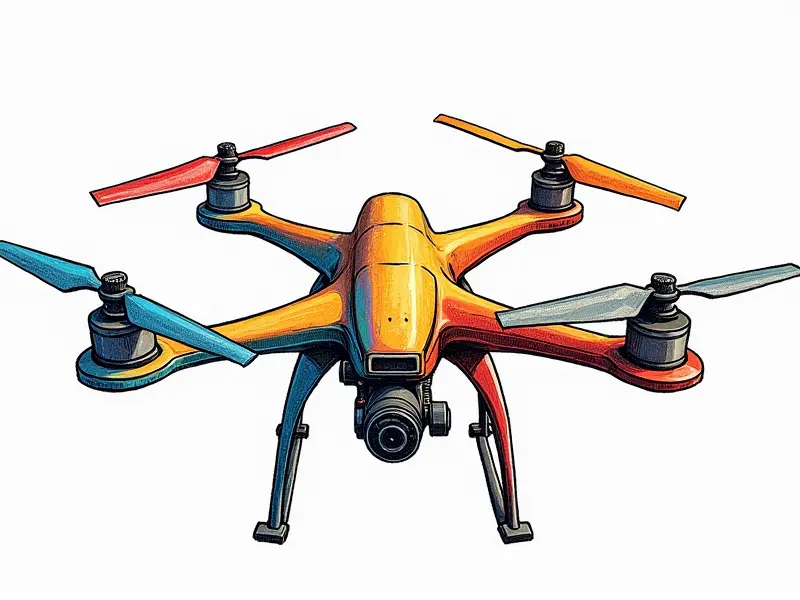Can RC helis fly indoors?

Can RC Helicopters Soar Inside Your Home?
When it comes to the world of remote-controlled (RC) aircraft, enthusiasts often wonder about the feasibility and challenges of flying these machines indoors. The allure of being able to enjoy the excitement of piloting an RC helicopter without venturing outside is undeniable. This article delves into whether indoor flight for RC helicopters is a viable option and what considerations come into play.
The Indoor RC Helicopter Challenge
Flying RC helis indoors presents unique challenges that differ significantly from outdoor flying conditions. The confined space, lack of wind, and potential obstacles like walls and furniture all contribute to the complexity of indoor flight. Understanding these factors is crucial for anyone interested in pursuing this hobby.
Space Constraints
- Size: Indoor spaces are typically limited compared to open outdoor areas, which means maneuvering space is restricted.
- Obstacles: Walls, furniture, and other objects can impede flight paths and require careful navigation.
Airflow Differences
- Lack of Wind: Without natural airflow, indoor flying can be less challenging in terms of wind resistance but more difficult to maintain stability due to the absence of a consistent breeze.
- Temperature and Humidity: Changes in these conditions can affect battery performance and motor efficiency, impacting flight duration and control responsiveness.
RC Helis in Tight Spaces: A Reality Check
The reality of flying RC helis indoors is that it requires a combination of the right equipment, skill, and patience. Not all helicopters are suitable for indoor use, and even those designed for smaller spaces may need adjustments to perform optimally.
Equipment Considerations
- Size: Smaller RC helis with a wingspan of 25 inches or less tend to be more manageable indoors.
- Battery Capacity: Higher-capacity batteries can provide longer flight times, which is crucial in confined spaces where recharging frequently would be disruptive.
Technical Adjustments
- Gyro Sensitivity: Adjusting gyro sensitivity can improve stability and control in the absence of natural wind.
- Propeller Size: Smaller propellers are often better suited for indoor flying as they generate less lift, making it easier to maneuver in tight spaces.
Exploring Indoor Flying with RC Helicopters
Flying RC helis indoors can be an exciting and rewarding experience if approached correctly. The key is selecting the right helicopter model and making necessary adjustments for optimal performance.
Selecting the Right Model
- Micro Heli: Micro-sized helicopters are ideal for indoor use due to their small size and agility.
- Flybarless (FB) Helis: These models offer better stability indoors, especially in tight spaces where traditional flybar-equipped helis might struggle.
Tips for Indoor Flight
- Clean Environment: Ensure the flying area is free of dust and debris to avoid clogging propellers or damaging electronics.
- Clear Pathways: Remove any obstacles that could interfere with flight paths, such as tables, chairs, or other furniture.
Is Indoor RC Helicopter Flying a Myth?
The idea of flying an RC helicopter indoors is not a myth but rather a reality for those willing to put in the effort and use appropriate equipment. While there are challenges, they can be overcome with the right approach and mindset.
Flying Indoors: A Reality
- Feasibility: With proper planning and the right tools, indoor flight is indeed possible and enjoyable.
- Skill Development: Indoor flying can also help improve your piloting skills by forcing you to navigate tight spaces more precisely.
Best RC Helis for Indoor Flight
Selecting the best RC helicopter models for indoor use is crucial. Here are some top choices that excel in confined environments:
Micro Heli Options
- HobbyZone Micro Scout: Known for its agility and ease of control, making it ideal for beginners.
- E-flite Blade Nano QX2: This model offers excellent stability and maneuverability in tight spaces.
Flybarless Helis
- T-Rex 500: A popular choice for its robust build and superior indoor performance.
- HobbyKing X4 Mini FPV: Compact size with high maneuverability, making it perfect for tight quarters.
Tips for Flying RC Helis Inside
To ensure a successful and enjoyable indoor flying experience, follow these tips:
Finding the Right Space
- Room Size: Choose a room with ample ceiling height to allow vertical maneuvering.
- Lighting: Good lighting is essential for visibility and better control during flight.
Maintaining Equipment
- Battery Care: Regularly check battery condition and charge fully before use to maximize flight time.
- Cleaning Propellers: Keep propellers clean and free of dust or debris for optimal performance.
Can RC Helis Maneuver Inside?
The ability of RC helis to maneuver indoors depends on several factors, including the model's design, size, and your piloting skills. Properly equipped and skillfully operated RC helicopters can indeed navigate indoor environments with ease.
Maneuverability Factors
- Size: Smaller helis are generally more agile and easier to control indoors.
- Skill Level: Advanced pilots who have mastered the nuances of indoor flying can navigate even tight spaces with confidence.
Indoor Flying with RC Helicopters: Possible?
Yes, indoor flying with RC helicopters is not only possible but also highly rewarding. By selecting the right equipment and adhering to best practices, you can enjoy this hobby without leaving your home.
Conclusion
Flying RC helis indoors presents unique challenges but offers a fantastic way to experience the thrill of piloting these machines in a controlled environment. With the right helicopter model, adjustments for indoor conditions, and adherence to best practices, you can enjoy successful and enjoyable flights within your home.

